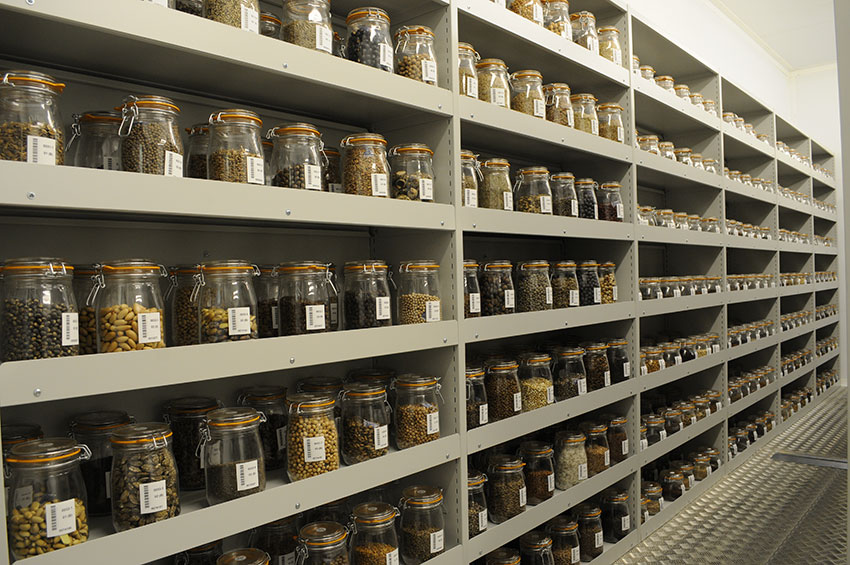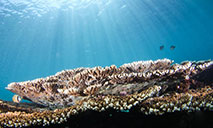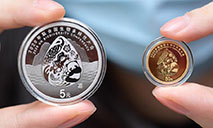Seed bank provides a safe home for wildlife species

Photo shows a glimpse of the Germplasm Bank of Wild Species in Southwest China. (Photo courtesy of the Kunming Institute of Botany of the Chinese Academy of Sciences)
As the only comprehensive preservation facility for the storage of wildlife germplasm resources in China, the Germplasm Bank of Wild Species in Southwest China, a wildlife seed bank located in Kunming, capital of southwest China’s Yunnan province, has preserved 85,046 samples of seeds of 10,601 species, accounting for 36 percent of the total number of flowering plant species found in China.
Founded in 2007, the seed bank is a comprehensive national database for the collection and preservation of wildlife germplasm resources. It includes a seed pool, DNA bank, microbial bank, animal germplasm resource bank and other sectors.
It has taken a great deal of effort for the researchers to collect such tiny seeds. In June 2021, the seed bank collected the seeds of extremely endangered wild plant species from several sinkholes in Mengzi city, together with the support of the local forestry and grassland bureau. Due to the complicated geographical locations of the sinkholes, the research activities were carried out with the assistance of professional climbers, with drones having also been adopted for use during the process.
Eventually, the researchers discovered a new butterfly species classified as extremely endangered. They also collected the seeds of rare wild plants and recorded key information, such as the time and location of the discoveries, the longitude, latitude and altitude of the locations, the soil conditions, and details about the surrounding environment, among others.

Photo shows wild plant seed specimens at the Germplasm Bank of Wild Species in Southwest China. (Photo courtesy of the Kunming Institute of Botany of the Chinese Academy of Sciences)
To collect and preserve the valuable seed resources, the researchers had no choice but to cross mountains and rivers to look for the plants, requiring accurate timing to acquire seeds suitable for depositing in a seed bank. A complete seed sample contains at least 2,500 seeds, and it is ideal if there are at least 10,000 seeds in all. Moreover, no more than 20 percent of the seeds produced by any individual plants should be collected in order to make sure that the research activities have a limited impact on local seed communities.
“Behind each seed there is arduous work,” said Zhang Ting, a seed collector working with the seed bank. Zhang and his colleagues collected 5,000 seeds of a rare plant during their June trip, and are currently in the process of cleaning, checking and storing the seeds.

Photo shows wild plant seed specimens at the Germplasm Bank of Wild Species in Southwest China. (Photo courtesy of the Kunming Institute of Botany of the Chinese Academy of Sciences)
The threshold for the seed entries is high. Seeds from rare, endangered and special plants as well as those plants having a high economic and ecological value, not to mention having an important value for scientific research, will be the first ones to be stored, with the storing procedure following a set of strict technical standards to ensure that the seeds are deposited in a proper and timely way.
“We test the status of the seeds every five to 10 years to make sure they are still full of vitality,” said Cai Jie, head of the preservation department at the seed bank, who disclosed that most of the seeds can be preserved for a period of several decades or even more than 1,000 years when the temperature is kept at minus 20 degrees Celsius.
Photos
Related Stories
- SW China's Jiaozi Mountain: home to rare animals, plants
- Tibet protects natural areas, improves biodiversity
- Interview: China makes powerful, inspiring commitments to biodiversity conservation at COP15, says WWF Int'l chief
- Interview: China's experience in preserving biodiversity deserves comprehensive study -- Kyrgyz expert
- China's commitment to establishing Kunming Biodiversity Fund injects confidence into global biodiversity conservation, say experts
Copyright © 2021 People's Daily Online. All Rights Reserved.










